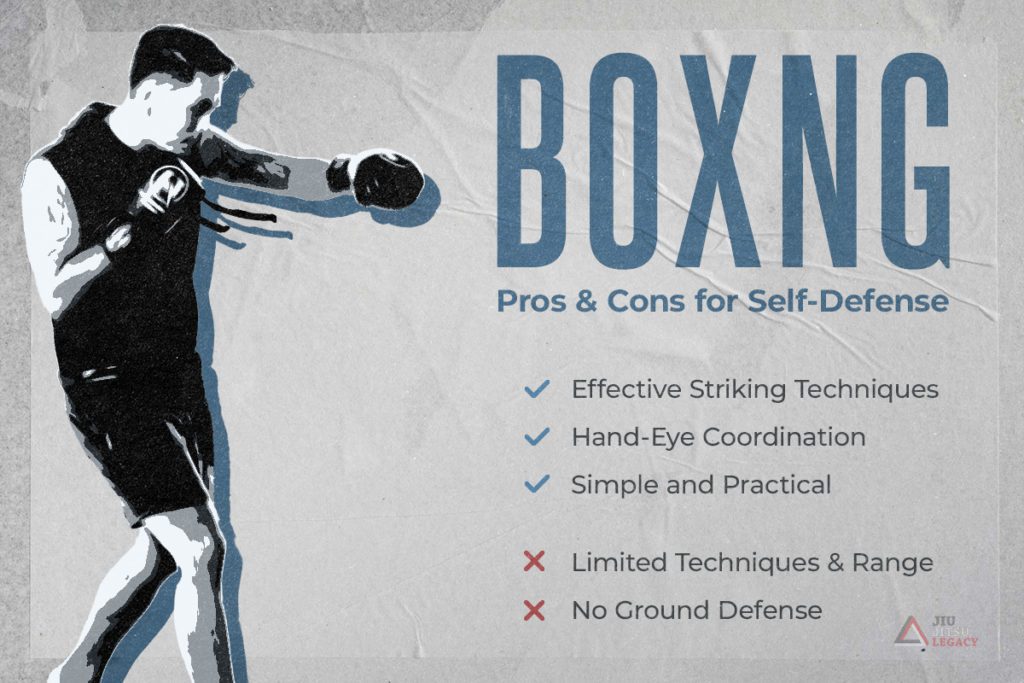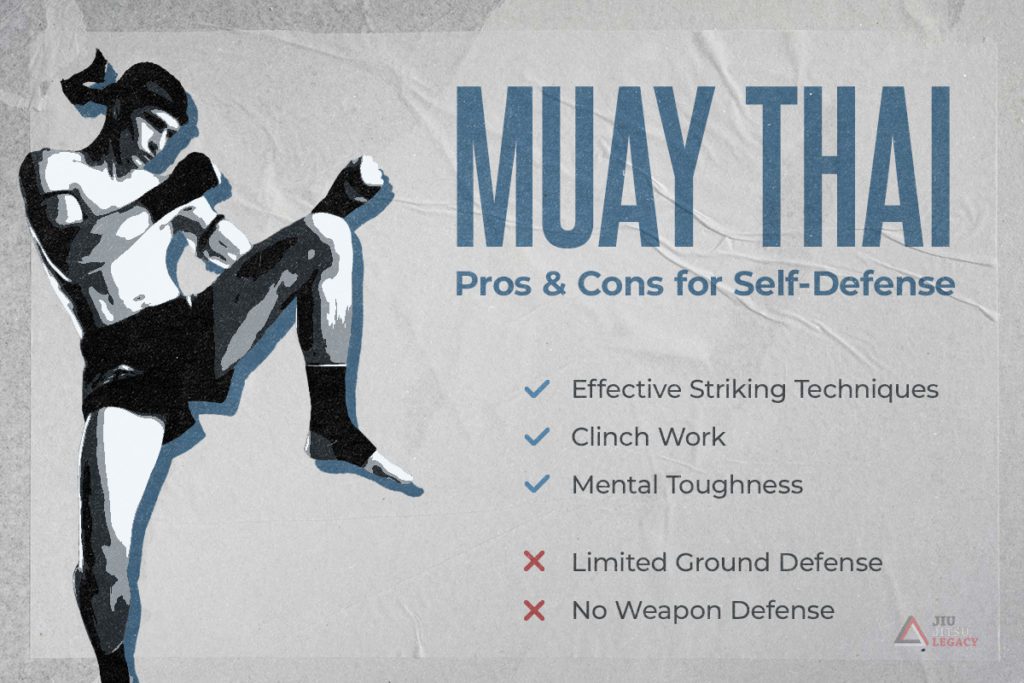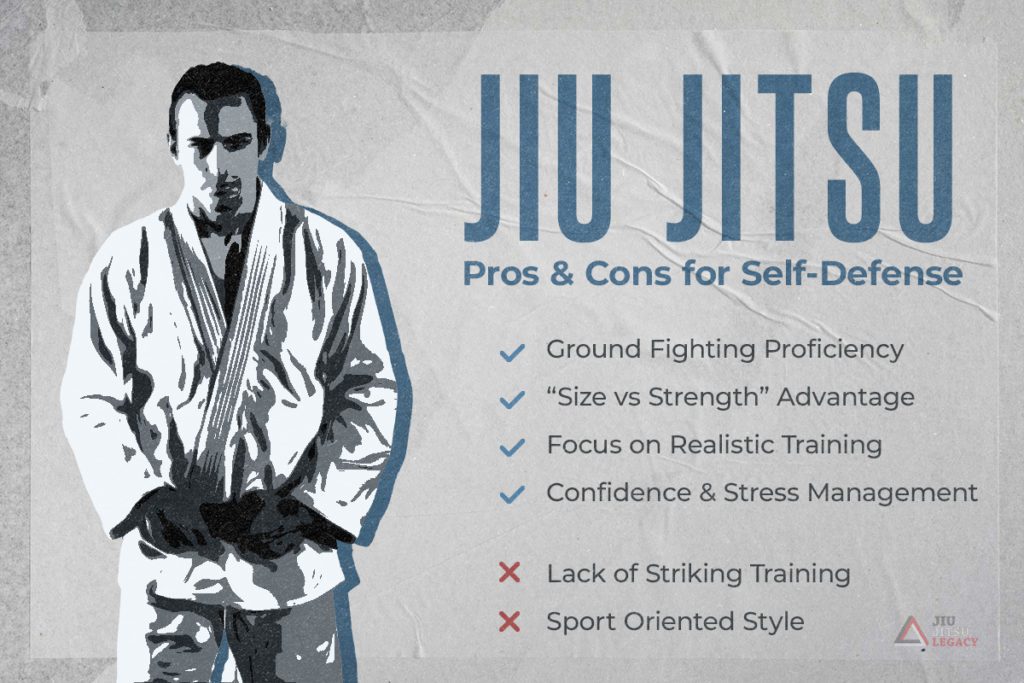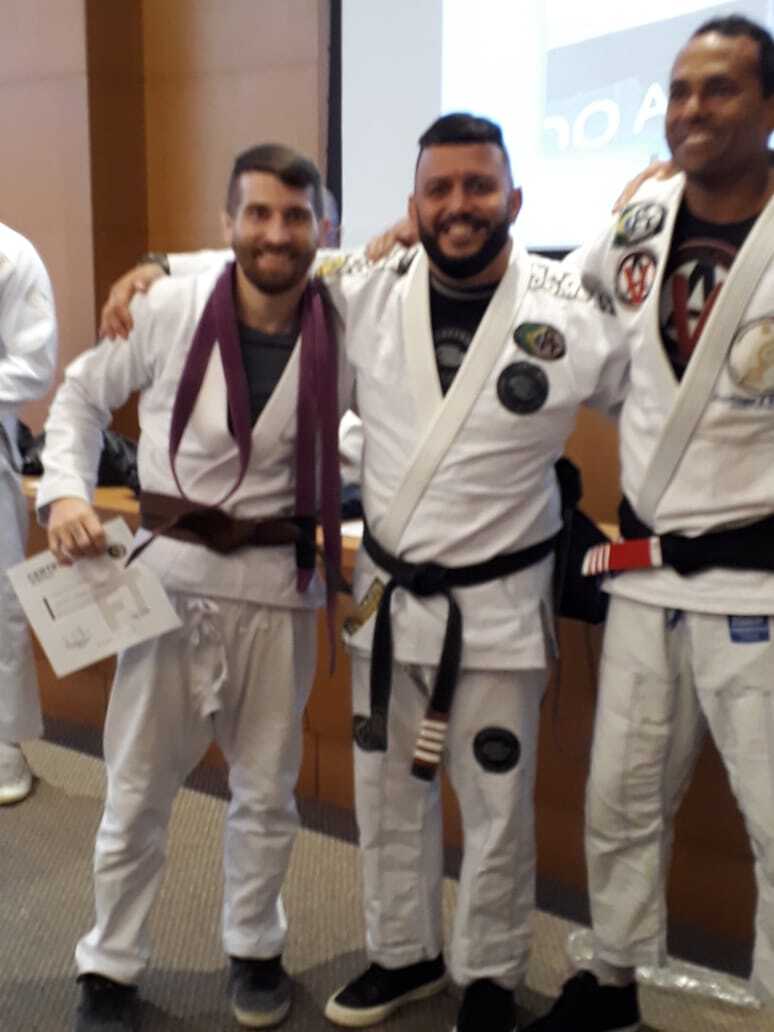One of the most commonly asked questions online is what are the best martial arts for self-defense. People want to know what martial arts they should learn to be able to defend themselves properly.
Here are choices for the best martial arts for self-defense. Reviewing the positive and negative aspects of four of the most practiced self-defense martial arts.
Boxing
Historically, boxing has been one of the most popular forms of self-defense practiced in the world. Known for its simplicity and effectiveness. Check out the positives and negatives of learning boxing for self-defense.

The Positives of Boxing For Self-Defense
- Effective Striking Techniques: Boxing emphasizes punches and defensive maneuvers, providing practitioners with efficient striking skills that can be useful in a self-defense situation.
- Hand-Eye Coordination: Regular boxing training improves hand-eye coordination, allowing practitioners to react quickly and accurately to threats.
- Simple and Practical: Boxing techniques are straightforward and easy to learn, making it accessible for individuals seeking practical self-defense skills.
The Negatives of Boxing For Self-Defense
- Limited Techniques: Boxing primarily focuses on punches, which means it does not address kicking, grappling, or other types of attacks that might be encountered in real-world self-defense situations.
- No Ground Defense: Boxing does not cover ground-based attacks or grappling, which leaves practitioners vulnerable if taken to the ground during a confrontation.
- Limited Range: Boxing is most effective in close-quarters situations, so if an assailant is armed or uses long-range weapons, boxing techniques might not be sufficient.
Karate
Karate is one of the most widely practiced martial arts in the world. Credited for being a great form of self-defense. Check out the positives and negatives below of learning Karate for self-defense.

The Positives of Karate For Self-Defense
There are many reasons why Karate is one of the most popular forms of self-defense. Here are the positives of using this martial art for self-defense.
- Striking Techniques: Karate emphasizes powerful strikes and blocks, which can be effective for defending against single attackers in stand-up situations.
- Discipline and Focus: Training in Karate instills discipline, focus, and mental toughness, enabling practitioners to stay calm and composed during confrontations.
- Popular Self-Defense Choice: Karate has historically been one of the last century’s most popular forms of self-defense. There are over 100 million Karate practitioners in the world.
The Negatives of Karate For Self-Defense
Karate has some glaring flaws that keep it from being the best martial art for self-defense. Here are the negative aspects of using this martial art for self-defense.
- No Ground Techniques: Karate focuses primarily on stand-up fighting, so it may be less effective when dealing with ground-based attacks or grappling scenarios.
- Lack of Real-World Scenarios: Traditional Karate training often follows set patterns (katas) and predetermined movements, which may not fully prepare practitioners for unpredictable real-world encounters.
Muay Thai
Muay Thai is an effective striking art and one of the best martial arts for self-defense. Check out the positives and negatives of this martial art below.

The Positives of Muay Thai For Self-Defense
Muay Thai is one of the world’s most diverse striking martial arts. Here are the positives of learning this martial art for self-defense.
- Effective Striking Techniques: Muay Thai practitioners are trained to use punches, kicks, elbows, and knees with power and precision, making it highly effective for defending against standing attackers.
- Clinch Work: Muay Thai includes clinching techniques, allowing practitioners to control and strike opponents from close range, making it useful in tight, grappling-like scenarios.
- Mental Toughness: Muay Thai training involves a degree of mental conditioning, helping practitioners remain focused, composed, and less prone to panic in confrontational situations.
The Negatives of Muay Thai For Self-Defense
While Muay Thai is a good martial art, it does have its flaws. Here are some of the negatives of learning Muay Thai for self-defense.
- Limited Ground Defense: Muay Thai focuses primarily on standing techniques, which means it may not be as effective when dealing with ground-based attacks or grappling situations.
- No Weapon Defense: Muay Thai training does not cover defense against armed attackers, which is an important aspect of self-defense training.
Brazilian Jiu Jitsu
Being a jiu jitsu website, we’re obviously going to put BJJ down as one of the best martial arts for self-defense. It was created for the sole purpose of defending yourself against a bigger opponent using grappling.

The Positives of BJJ For Self-Defense
BJJ is an incredible martial art that is one of the best martial arts for self-defense for a number of reasons. Here are the five positives of learning Brazilian Jiu Jitsu for self-defense.
- Ground Fighting Proficiency: BJJ specializes in ground grappling, teaching practitioners how to control opponents and defend themselves effectively from the ground, which is a common scenario in real-world self-defense situations.
- Size and Strength Doesn’t Matter as Much: BJJ emphasizes technique and leverage, allowing smaller individuals to defend themselves effectively against larger and stronger attackers.
- Focus on Realistic Training: Many BJJ schools incorporate live sparring, known as “rolling,” which helps practitioners develop practical skills and experience in applying techniques against resisting opponents.
- Builds Confidence: Regular training in BJJ can boost self-confidence, as practitioners gain the skills and knowledge to handle physical altercations more effectively.
- Stress Management: BJJ training exposes practitioners to controlled stress, helping them manage adrenaline and emotions better during high-pressure situations.
The Negatives of BJJ For Self-Defense
We at the website our passionate BJJ practitioners, but we would be lying if we didn’t detail the martial art’s faults. Specifically, two negatives to the martial art.
- Lack of Striking Training: BJJ primarily focuses on grappling and does not teach any striking techniques. Some schools may teach striking defense, but it’s not adequate enough for you to rely solely on jiu jitsu for self-defense.
- Sport Jiu Jitsu: Modern BJJ has gone more towards being sports based and less of an emphasis on self-defense. Relying on Gi specific techniques that don’t translate to real-world situations.
What are the Best Self-Defense Martial Arts For Women?
Self-defense is a crucial skill that all women need to learn. Out of the four martial arts we listed, women would benefit most from two of them.
- BJJ
- Muay Thai
Women are generally at a physical disadvantage to men, which means they must use everything they can to defend themselves. They need to know how to strike with all of their limbs and be able to grapple against a bigger attacker.
Muay Thai will give them the skill of striking, while BJJ will teach them how to control a bigger person.
If you want an example of why these two are the best self-defense martial arts for women, look at Polyana Viana- A UFC veteran that made the news a few years ago for beating up a would-be robber.
Once Polyana realized the robber had no gun, the thief would enter a world of pain. Viana throttled the thief and took him to the ground. Holding him until the police came.
That’s why, if you’re a woman, you’re doing yourself a disservice by not learning these self-defense martial arts.
What are the Best Martial Arts For Self-Defense?
To have well-rounded self-defense skills, you must learn various disciplines. Becoming adept at fighting both on your feet and on the ground.
That’s why these four forms of self-defense above are the best martial arts for self-defense that you can learn. Consider learning and practicing these four martial arts to be better prepared to defend yourself.

